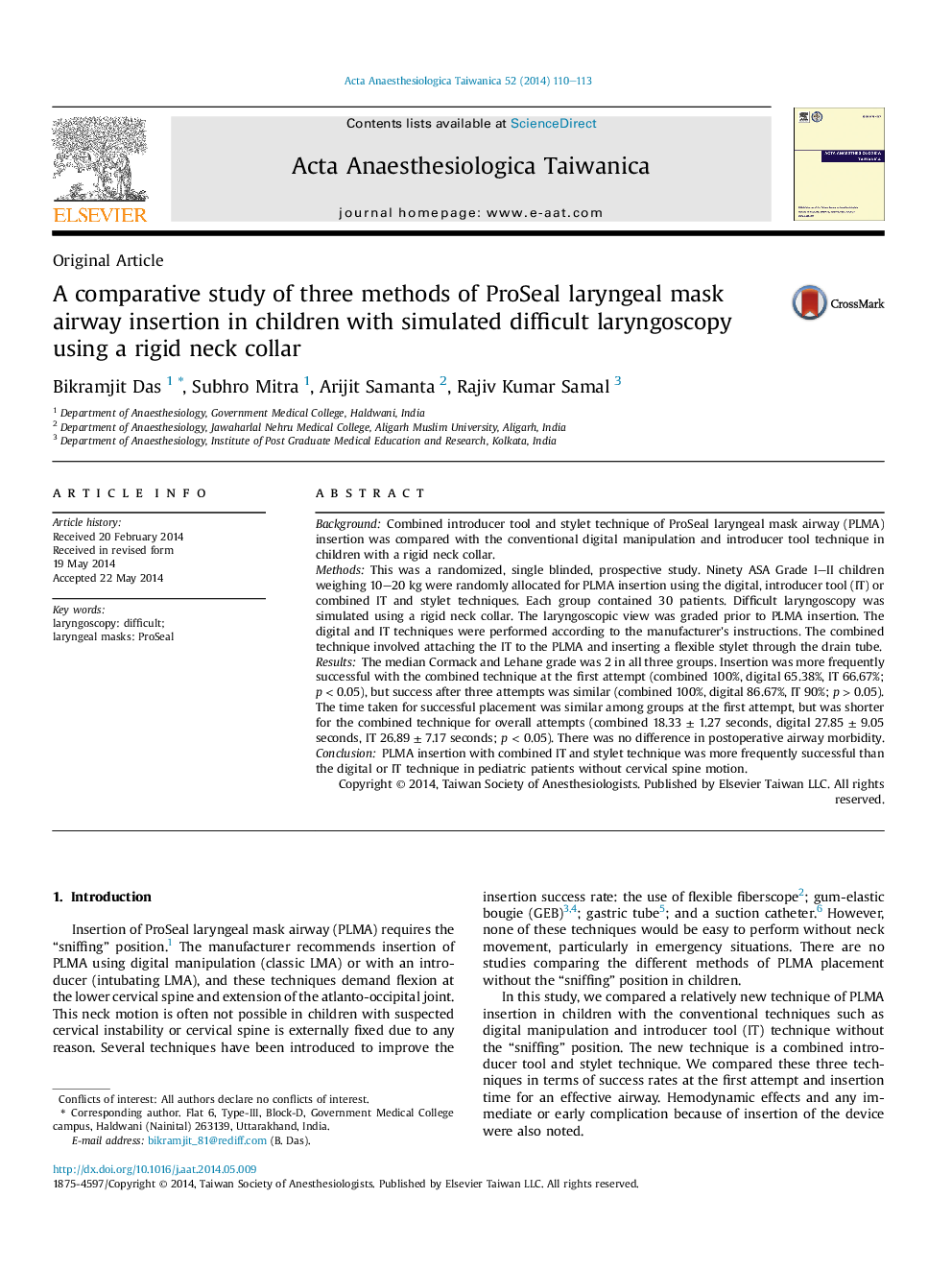| Article ID | Journal | Published Year | Pages | File Type |
|---|---|---|---|---|
| 2741465 | Acta Anaesthesiologica Taiwanica | 2014 | 4 Pages |
BackgroundCombined introducer tool and stylet technique of ProSeal laryngeal mask airway (PLMA) insertion was compared with the conventional digital manipulation and introducer tool technique in children with a rigid neck collar.MethodsThis was a randomized, single blinded, prospective study. Ninety ASA Grade I–II children weighing 10–20 kg were randomly allocated for PLMA insertion using the digital, introducer tool (IT) or combined IT and stylet techniques. Each group contained 30 patients. Difficult laryngoscopy was simulated using a rigid neck collar. The laryngoscopic view was graded prior to PLMA insertion. The digital and IT techniques were performed according to the manufacturer's instructions. The combined technique involved attaching the IT to the PLMA and inserting a flexible stylet through the drain tube.ResultsThe median Cormack and Lehane grade was 2 in all three groups. Insertion was more frequently successful with the combined technique at the first attempt (combined 100%, digital 65.38%, IT 66.67%; p < 0.05), but success after three attempts was similar (combined 100%, digital 86.67%, IT 90%; p > 0.05). The time taken for successful placement was similar among groups at the first attempt, but was shorter for the combined technique for overall attempts (combined 18.33 ± 1.27 seconds, digital 27.85 ± 9.05 seconds, IT 26.89 ± 7.17 seconds; p < 0.05). There was no difference in postoperative airway morbidity.ConclusionPLMA insertion with combined IT and stylet technique was more frequently successful than the digital or IT technique in pediatric patients without cervical spine motion.
